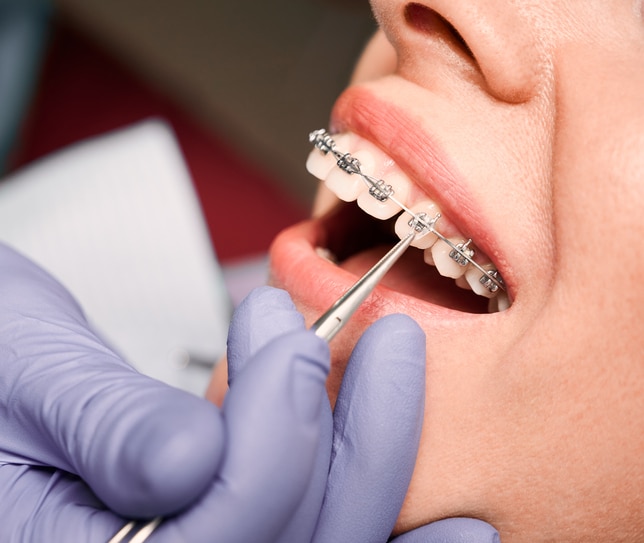Picking the Best Cumming Orthodontics for Effective Braces and Aligners Solutions
Picking the Best Cumming Orthodontics for Effective Braces and Aligners Solutions
Blog Article
Comprehensive Overview to Orthodontics Treatments for Remedying Dental Imbalances
Recognizing the ins and outs of each treatment, including their mechanisms, advantages, and prospective drawbacks, is critical in making informed decisions concerning one's orthodontic therapy. As we navigate via the extensive guide to orthodontic treatments for fixing oral misalignments, the elaborate information of each approach will unfold, losing light on the course toward a unified and practical oral alignment.
Orthodontic Procedures Overview

In enhancement to clear aligners and conventional dental braces, orthodontists may also suggest various other treatments like headwear, palatal expanders, or retainers to attend to particular placement problems (braces). These procedures are tailored per individual's unique needs and may include a combination of therapies to accomplish the wanted results. Routine modifications and surveillance are essential parts of orthodontic therapy to make certain progression gets on track and to make any type of needed adjustments along the method. By undertaking orthodontic procedures, patients can not only achieve a straighter grin yet additionally enhance their general dental wellness and feature.
Typical Dental Braces: Just How They Function
When thinking about orthodontic treatments for oral misalignments, conventional braces stand out as a tried and true technique for remedying teeth positioning. Conventional dental braces consist of braces, cables, and bands that function with each other to use continual pressure on the teeth, progressively relocating them into the wanted positioning.
One key facet of just how conventional braces work is the process of bone improvement. As stress is used to the teeth via the braces, the bone bordering the teeth is reshaped to support the brand-new tooth settings. This renovation is necessary for the long-lasting security of the fixed placement. Patients will need regular modifications at the orthodontist's workplace to make sure the braces proceed to apply the correct stress for efficient teeth motion.
Unseen Aligners: Cons and pros
These clear, personalized trays are practically undetectable when used, making them an attractive choice for individuals looking for an extra visually pleasing orthodontic therapy. Clients can get rid of the aligners before consuming or cleaning their teeth, decreasing the threat of food getting stuck in the device and simplifying the cleaning procedure.

Surgical Orthodontic Options
Surgical interventions in orthodontics present practical options for attending to intricate oral misalignments that may not be properly resolved via standard orthodontic therapies. While typical dental braces and a knockout post undetectable aligners can deal with lots of orthodontic issues, specific cases require medical intervention to achieve optimal outcomes. Surgical orthodontic choices are typically recommended for extreme malocclusions, substantial jaw inconsistencies, and cases where the underlying bone framework needs modification to attain proper alignment.
One usual surgical orthodontic treatment is orthognathic surgical treatment, which involves rearranging the jaws to fix functional problems such as problem eating or speaking. This surgery is usually carried out in cooperation with an orthodontist who aids line up the teeth prior to and after the procedure. Surgical orthodontics might also include treatments to reveal affected teeth, remove excess gum cells, or reshape the jawbone to produce a more harmonious face account.
Before taking into consideration surgical orthodontic choices, patients go through a thorough assessment to establish the need and potential advantages of such treatments. invisalign. While surgical procedure may seem overwhelming, it can considerably improve both the function and visual appeals of the smile in situations where standard orthodontic therapies fall short
Retainers and Post-Treatment Care

Failure to abide with post-treatment treatment directions can result in relapse, where the teeth gradually move back in the direction of their initial settings. Consistent retainer wear, good dental health, and routine dental check-ups are essential for keeping the outcomes accomplished through orthodontic surgery and making certain the lasting security of the remedied oral placement.
Final Thought
In conclusion, orthodontic procedures use various choices for correcting dental imbalances. Surgical orthodontic options are offered for extra severe imbalances. Overall, orthodontic procedures can efficiently boost dental health and wellness and visual appearance.
As we navigate with the thorough guide to orthodontic treatments for dealing with dental misalignments, the complex information of each method will unfold, losing light on the course towards a harmonious and useful dental alignment. - cumming orthodontist
One of the most typical orthodontic therapies is the usage of dental braces, which consist of steel braces and wires that use mild stress to progressively shift teeth into the desired setting.When thinking about orthodontic therapies for oral imbalances, traditional braces stand out as a time-tested method for fixing teeth positioning. Furthermore, undetectable aligners might not be suitable for complicated orthodontic problems that require more significant teeth movement, as they are usually suggested for mild to moderate situations. Retainers are tailor-made orthodontic gadgets created to hold teeth in their remedied settings after the completion of orthodontic treatment.
Report this page